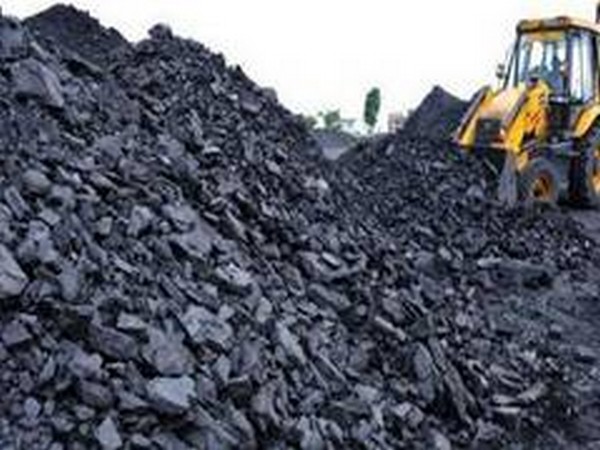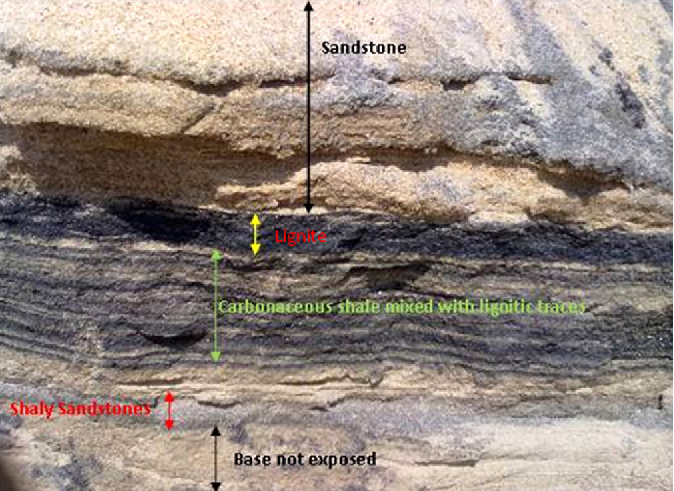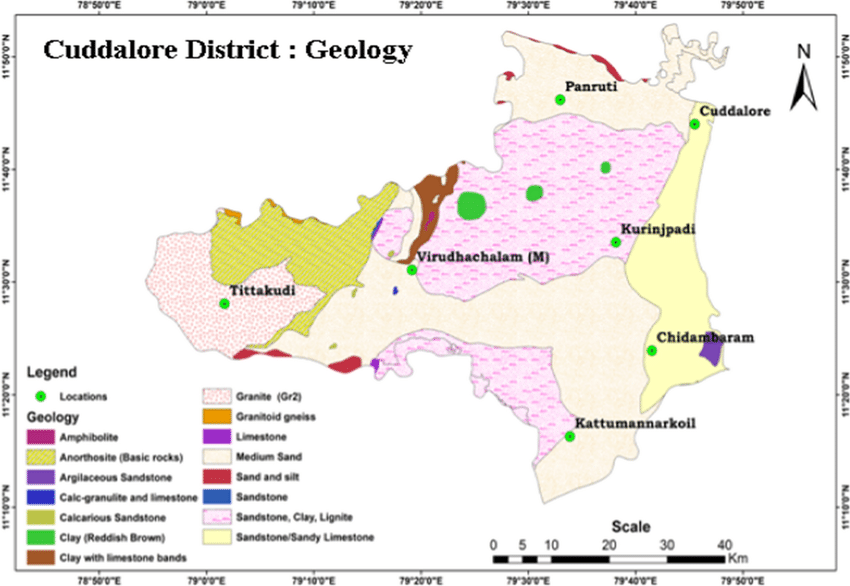The lignite seam of the Nyeveli-Jayamkondacholapuram area is a sub horizontal lensoid body occurring in between an upper zone of poorly consolidated sandstone, white clay and mottled clyed sandstone and a lower zone of poorly indurate thick sandstone(aquifer zone) with minor intercalations of thin ash grey to grey shale, calcareous siltstone, sandy limestones etc
The lignite field extends over a distance of 40Km in a north-south direction and is about 10Km wide in an east-west direction. The lignite seam, varying in thickness from 8 to 22 m, is underlain by sand with artesian aquifers which exert an upward pressure. The lignite seam is overlain by grey to white argillaceous sandstones, clay and sands. The Cuddalore Formation for the most part is covered by Quaternary sediments and recent alluvium. The overburden above the lignite seam is up to 55m in thickness. The lignite seam does not extend as a single unit throughout the area, but is split up. Occurrence of clay beds both above and below the lignite seam is recorded in the mine sections.
Palynological and microfossil studies of the lignite seams and the associated sediments of the Neyveli Formation, led to the inference that the age of the Neyveli Formation is of Eocence age, while the Cuddalore Formation separated from the underlying Neyveli Formation by an unconformity, is of Mio-Pliocence age. Mio-Pliocence palynoflora profusely occur in the clay and carbonaceous shales of the Cuddalore Formation.


Company Statistics Analysis
Great Achievement For Insurance
8563 +
Saticfied Custimer
2630 +
Experience Members
100 %
Satisfaction Rate
25 +
Years Experience
963 +
Awards Winning
Popular Clients
We’ve 1520+ Global Premium Clients



Generalized stratigraphy of Neyveli and Mannargudi Lignite Fields
| Age | Formation | Member and Thickness | Lithology |
| Quaternary | Alluvium (2m to m) and Laterites (1m to 2m) | Chocolate brown to dark grey clay and fine grained to pebbly sand, Reddish brown residual soil and weathered, lateritic and clays | |
| ———————————————-Unconformity—————————————— | |||
| Mio-Pliocene | Cuddalore/ Tittacheri | Mottled sandstone and clays (45m to 400m) | Variegated and greenish coloured clayey sandstones, siltstones and clays interbedded with poorly consolidated sandstone and thin carbonaceous clay, peat/lignite |
| ———————————————-Unconformity—————————————— | |||
| Eocence | Neyveli | Lignite (1m to 175m) | Lignite, lignitic clay, lignitic siltstone and lignitic sandstone wit parting lithology of loose sandstones and clays. |
| Aquifer sandstone(+150m) | Poorly consolidated sandstones, with thin interbeds of grey siltstone, shale and occasional fossiliferous calcareous rocks. | ||
| Palaeocene | Argillaceous sandstone and shales with fossils(+60m) | Interbeds of thick laminated grey to dark argillaceous sand stone and shales with calcareous rocks containing forams, molluscs and gastropods. | |
| ———————————————-Unconformity—————————————— | |||
| Cretaceous | Fossiliferous limestone, sandstone and shale(+1500m) | Limestone and shales comprise profuse microfossils and invertebrate fossils. | |
| ———————————————-Unconformity—————————————— | |||
| Archaean | Charnockites, granites, metasedimentaries etc., | ||

Ball clay, Fireclay and Silica sand
In the overburden of lignite, the minerals like Ballclay, Fire clay, Silica sand and other clays are occurring as lensoid bodied. The Fire Clays are range of refractory clays used in the manufacture of ceramics, especially fire brick. Ball clays or plastic clays are fine grained, highly plastic sedimentary clays, which fire to a light fire to a light or near white colour. They are used mainly in the manufacture of ceramic white ware and are valued for their key properties of plasticity, unfired strength and their light fired colour.
Aladi Formation
The Aladi Formation is well exposed at Palakollai village near Virudhachalam and comprises shale and siltstone with interbeds of cemented sandstone, calcarenite and coquina limestone. Its lower contact with the Mattur Formation is conformable, while it shows disconformable relationship with the overlying Cuddalore sandstone of Mio-Pliocene age. The faunal assemblages of this unit indicate a Maastrichtian














